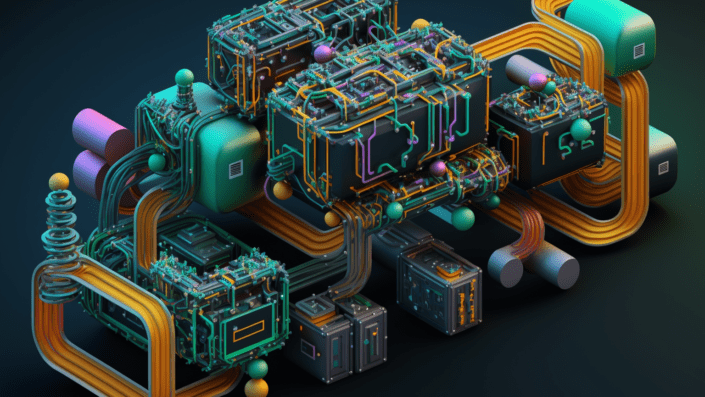Generative assets supply chain traceability is an important concept that aims to ensure transparency in the creation, distribution, and sale of tokenized generative assets. Tokenized generative assets involve the use of data from various sources such as social media data, weather data, or financial data to generate artwork using generative algorithms. These digital artworks are then converted into non-fungible tokens (NFTs) that serve as a digital certificate of ownership for the artwork. The NFTs can be bought, sold, and traded on various online marketplaces.
Supply chain of generative assets
The supply chain of tokenized generative assets involves several steps, including data extraction, data providers, generative algorithms, creation, tokenization, listing, sale, storage and delivery, and royalty payments. The data extraction step involves collecting data from various sources, which is then used as input for the generative algorithm. The data providers are the companies or organizations that provide the data, such as weather services or financial institutions. The generative algorithm is the computer program or algorithm that uses the input data to generate the artwork. The creation step involves the actual creation of the generative artwork using the algorithm, and the digital artwork is stored on a computer or server. The tokenization step involves converting the digital artwork into a non-fungible token (NFT), which serves as a digital certificate of ownership for the artwork. The listing step involves listing the NFT for sale on various online marketplaces, such as OpenSea or Nifty Gateway. The sale step involves the purchase of the NFT by a buyer, who receives the digital certificate of ownership for the artwork. The storage and delivery step involves the storage of the digital artwork and the NFT in a digital wallet, which can be accessed by the owner using a private key. Finally, the royalty payments step involves paying the original artist a percentage of the sale price as a royalty payment when the artwork is sold again in the future.
To ensure transparency in the supply chain of tokenized generative assets, various smart contracts have been developed. For example, the dataprovider.sol contract allows authorized data providers to provide geographic data of food supply by calling the provideData function and sending the specified amount of ether as payment. The generativeartist.sol contract allows the creation of ERC721 tokens that represent generative art maps based on geographic data of food supply. The royalties.sol contract implements the IERC2981 interface, which defines a standard way to retrieve information about royalty payments for a given NFT. The supplychain.sol contract extends the Royalties contract to handle the distribution of royalties to the data provider and the generative artist for a tokenized generative artwork. The aimodels.sol contract added a new property to the GenerativeArt contract, which is the address of an AI model contract. When a transfer occurs, the royalties are distributed to the data provider, generative artist, and the AI model contract. Finally, the global_model.cpp implementation of the GlobalModel class and the local_model.cpp implementation of the LocalModel class are used in federated learning systems to ensure transparency and accountability in the training of machine learning models.
Conclusion
The traceability of the supply chain of tokenized generative assets is an important concept that ensures transparency and accountability in the creation, distribution, and sale of these digital assets. Various smart contracts and machine learning models have been developed to achieve this goal, and these tools can help to support a more transparent and equitable ecosystem for tokenized generative assets.
See Github repo on Managing the Supply Chain for Tokenized Generative Assets
tokenized-generative-assets (this link opens in a new window) by guillaumelauzier (this link opens in a new window)
The described examples involve various smart contracts and classes used in the context of blockchain technology, generative art, and federated learning. Smart contracts are self-executing computer programs that can be used to automate processes, enforce rules, and create digital assets, among other things. In the case of tokenized generative art ..
